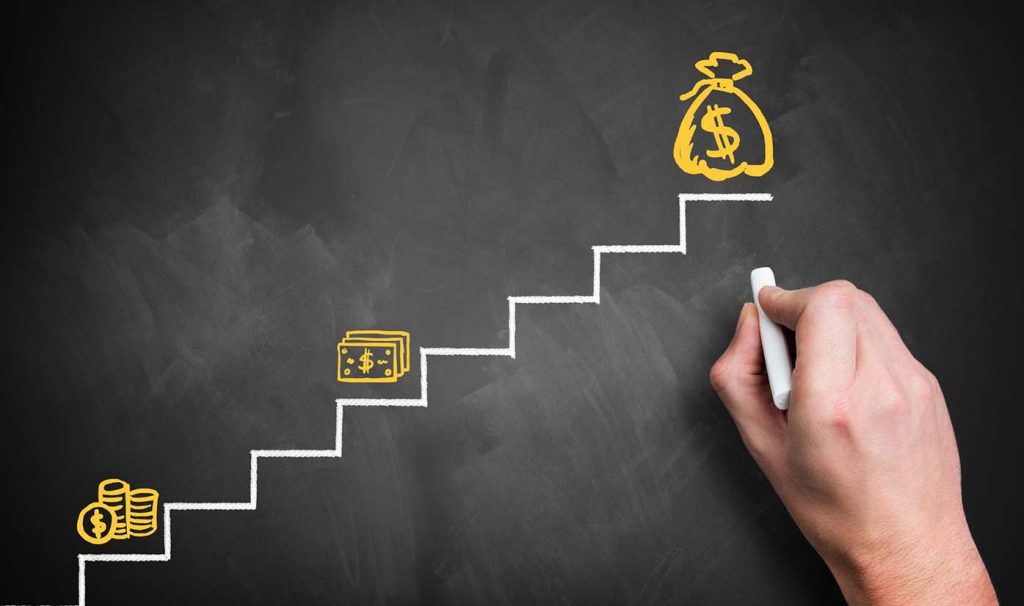And How to Match Each Goal With the Right Investment Strategy
Imagine trying to build a house with no blueprint. You’ve got the tools, maybe even some cash and a plot of land—but without a plan, it’s a mess waiting to happen.
The same goes for your financial future. Whether you’re saving for a beach vacation next year, a down payment in five, or retirement in thirty, knowing what you want, when you want it, and how you’ll get there is essential.
This is where financial goals come in—specifically, understanding the difference between short-term, medium-term, and long-term goals. Each has its own purpose, risk tolerance, investment horizon, and best-fit financial tools.
Let’s break it down in a way that’s easy to follow, interesting to read, and incredibly useful.
🧭 What Are Financial Goals (And Why Should You Care)?
Financial goals are simply money milestones that reflect the life you want. They give purpose to your spending, saving, and investing decisions. Without them, you’re just throwing money into the wind and hoping something lands.
There are three major types of goals, and understanding how to tackle each can turn your salary into real wealth:
- Short-term goals (under 3 years)
- Medium-term goals (3–7 years)
- Long-term goals (7+ years)
Each category demands a different investment strategy. Let’s take a deep dive into each and decode the smartest moves to make.
💸 Short-Term Financial Goals (Under 3 Years)
📌 Examples:
- Emergency fund
- Vacation
- Paying off high-interest debt
- Buying a new laptop or car
- Saving for a wedding
🧠 Key Characteristics:
- High liquidity
- Minimal risk
- Easy access to cash
This is not the time to be adventurous. You don’t want to invest your wedding savings in a volatile tech stock and then find out it tanked two weeks before the big day. For short-term goals, safety trumps returns.
💼 Best Investment Options:
- High-Yield Savings Accounts – Ideal for emergency funds or any savings you’ll need at a moment’s notice.
- Money Market Funds – Low risk, low return—but good for large sums you might need within a year or two.
- Certificates of Deposit (CDs) – Slightly higher returns than savings accounts, but lock your money in for a fixed period.
- Short-Term Bond Funds – Better than keeping money in checking, but still relatively stable.
🎯 Who Should Focus on These?
- New graduates
- Renters saving for their first home
- Anyone with irregular income or just starting to build an emergency cushion
💡 Medium-Term Financial Goals (3–7 Years)
📌 Examples:
- Down payment on a house
- Starting a business
- Paying for grad school
- A big family trip
Medium-term goals require a balance: you need growth, but you also want some level of protection. You can afford a little risk here—but not so much that your dream house down payment disappears in a market crash.
🧠 Key Characteristics:
- Moderate liquidity
- Moderate risk tolerance
- Balanced investment approach

💼 Best Investment Options:
- Balanced Mutual Funds or ETFs – A mix of stocks and bonds that cushion downturns while offering growth potential.
- Target-Date Funds – Pick a fund with a target date that aligns with your goal year (e.g., 2030).
- Dividend-Paying Stocks – Provide income and tend to be less volatile than growth stocks.
- Robo-Advisors – Many platforms automatically build medium-risk portfolios for goals 3–5 years out.
🎯 Who Should Focus on These?
- Young couples planning a family
- Professionals considering further education
- Entrepreneurs preparing to launch
🏦 Long-Term Financial Goals (7+ Years)
📌 Examples:
- Retirement
- Paying off a mortgage
- Saving for a child’s college tuition
- Achieving financial independence
Long-term goals are where compounding magic happens. You have time on your side, and with it, the ability to ride out market volatility for better returns.
These goals require patience, discipline, and the willingness to invest in higher-risk assets that provide the most growth over time.
🧠 Key Characteristics:
- Low liquidity (you don’t need this money now)
- Higher risk tolerance
- Aggressive growth strategy
💼 Best Investment Options:
- Stock Market (ETFs, Index Funds, Individual Stocks) – Over long periods, the stock market has consistently outperformed other asset classes.
- Real Estate Investments – Rental properties or REITs can provide both appreciation and income.
- 401(k) and IRAs – Tax-advantaged accounts that supercharge retirement savings.
- International and Emerging Markets – Diversify for higher potential growth.
- Growth Funds – Designed for capital appreciation, especially in booming sectors like tech or healthcare.
🎯 Who Should Focus on These?
- Anyone in their 20s, 30s, or even 40s thinking about retirement
- Families with children (planning for college or generational wealth)
- FIRE movement followers (Financial Independence, Retire Early)
🔀 Matching Goals to Investments: A Smart Framework
Let’s say you’re 30 years old and have a decent salary. Your financial goals may look like this:
- Emergency Fund (Short-term) – High-yield savings account
- Down Payment in 5 Years (Medium-term) – 60% in balanced ETFs, 40% in bonds
- Retirement in 35 Years (Long-term) – 90% in global equities, 10% in bonds or real estate
By matching the timeline of your goal to the risk profile of your investment, you optimize your growth potential while avoiding nasty surprises.
🔧 Tools and Tips to Stay on Track
- Use Budgeting Tools like YNAB or Mint to track spending and align it with your goals.
- Automate Savings – Set recurring transfers to your short, medium, and long-term accounts.
- Review Goals Annually – Life changes. Your goals (and investment mix) should evolve too.
- Use Goal-Specific Accounts – Label them clearly: “Europe Trip Fund,” “First Home Fund,” “Retirement 2055.”

🤯 Pro Tip: Avoid “Goal Creep”
This happens when you’re constantly shifting the timeline and size of your goals (like turning a “vacation” into a “round-the-world sabbatical”). It’s okay to dream big—but stay realistic and adjust your investment strategy accordingly.
✨ Structure Builds Freedom
Setting and aligning your short-, medium-, and long-term goals isn’t just a financial exercise—it’s a way of creating the life you want, on your terms. Whether you’re dreaming of sipping coffee in Paris, retiring by the beach, or just getting out of debt, having a plan makes all the difference.
The golden rule? Match the risk of your investment with the timeline of your goal. That’s where clarity meets compound growth—and that’s how smart wealth is built.
